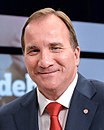
Back الانتخابات العامة السويدية 2014 Arabic Eleccions generals sueques de 2014 Catalan Parlamentní volby ve Švédsku 2014 Czech Riksdagsvalget i Sverige 2014 Danish Wahl zum Schwedischen Reichstag 2014 German Σουηδικές γενικές εκλογές 2014 Greek Elecciones generales de Suecia de 2014 Spanish Ruotsin valtiopäivävaalit 2014 Finnish Ríkisdagsvalið í Svøríki 2014 Faeroese Élections législatives suédoises de 2014 French
| ||||||||||||||||||||||||||||||||||||||||||||||||||||||||||||||||||||||||||||||||||||||||||||||||||||||||||||||||||||||||||||||||||
All 349 seats in the Riksdag 175 seats needed for a majority | ||||||||||||||||||||||||||||||||||||||||||||||||||||||||||||||||||||||||||||||||||||||||||||||||||||||||||||||||||||||||||||||||||
|---|---|---|---|---|---|---|---|---|---|---|---|---|---|---|---|---|---|---|---|---|---|---|---|---|---|---|---|---|---|---|---|---|---|---|---|---|---|---|---|---|---|---|---|---|---|---|---|---|---|---|---|---|---|---|---|---|---|---|---|---|---|---|---|---|---|---|---|---|---|---|---|---|---|---|---|---|---|---|---|---|---|---|---|---|---|---|---|---|---|---|---|---|---|---|---|---|---|---|---|---|---|---|---|---|---|---|---|---|---|---|---|---|---|---|---|---|---|---|---|---|---|---|---|---|---|---|---|---|---|---|
| Turnout | 85.8% ( | |||||||||||||||||||||||||||||||||||||||||||||||||||||||||||||||||||||||||||||||||||||||||||||||||||||||||||||||||||||||||||||||||
| ||||||||||||||||||||||||||||||||||||||||||||||||||||||||||||||||||||||||||||||||||||||||||||||||||||||||||||||||||||||||||||||||||
| ||||||||||||||||||||||||||||||||||||||||||||||||||||||||||||||||||||||||||||||||||||||||||||||||||||||||||||||||||||||||||||||||||
General elections were held in Sweden on 14 September 2014 to elect all 349 seats in the Riksdag, alongside elections for the 21 county councils, and 290 municipal assemblies.
The centre-right Alliance for Sweden coalition (comprising the Moderate Party, Liberal People's Party, Centre Party, and Christian Democrats) sought a third term in government. In contrast to the previous election, the three largest parties on the left (the Social Democrats, Green Party, and Left Party) ran independent campaigns, as did the far-right[1] Sweden Democrats. The left-wing party, Feminist Initiative, did not pass the 4% threshold.
The election result saw the largest three parties on the left outpoll the Alliance for Sweden, with the two blocs respectively winning 159 and 141 seats. The Sweden Democrats doubled their support and won the remaining 49 seats. The party's biggest gain came from gaining about the same number of the vote share as the Moderate Party lost but also made strong inroads into traditionally red municipalities in the central region of Svealand. The Sweden Democrats also became the largest party in two rural municipalities in Scania in the party's southern heartlands.[2][3] Fredrik Reinfeldt, the incumbent prime minister, lost his bid for a third term. On 3 October, he was replaced by Stefan Löfven, who formed a minority government consisting of the Social Democrats and Greens. With the result being a hung parliament, this led to the December Agreement to allow the red-green government to pass its budgets after a government crisis later in the autumn.
The leftist parties became the largest courtesy of the collapse of the Alliance vote share into the Sweden Democrat fold, rather than making any sizeable gains. As a result, very few counties returned other results than hung parliament delegations, even historical Social Democratic strongholds such as Blekinge, Dalarna, Södermanland and Västmanland saw the red-greens failed to secure an outright majority in spite of the election win.[4] The 138 seats for the government (37 short of a majority), made it the cabinet with the lowest seat share in Swedish history to begin a term.
- ^ * Downs, William M. (2012), Political Extremism in Democracies: Combating Intolerance, Palgrave Macmillan, pp. 33, 149
- David Crouch. "The rise of the anti-immigrant Sweden Democrats: 'We don't feel at home any more, and it's their fault'". The Guardian. Retrieved 24 February 2015.
- Ellinas, Antonis A. (2010), The Media and the Far Right in Western Europe: Playing the Nationalist Card, Cambridge University Press, pp. 10–11
- "The far right in northern Europe". Economist. 17 March 2011. Retrieved 5 April 2011.
- ^ "Hörby kommun - Röster - Val 2014" (in Swedish). Valmyndigheten. Retrieved 28 January 2020.
- ^ "Sjöbo kommun - Röster - Val 2014" (in Swedish). Valmyndigheten. Retrieved 28 January 2020.
- ^ "Röster - Val 2014". Valmyndigheten. Archived from the original on 11 November 2020. Retrieved 28 January 2020.









